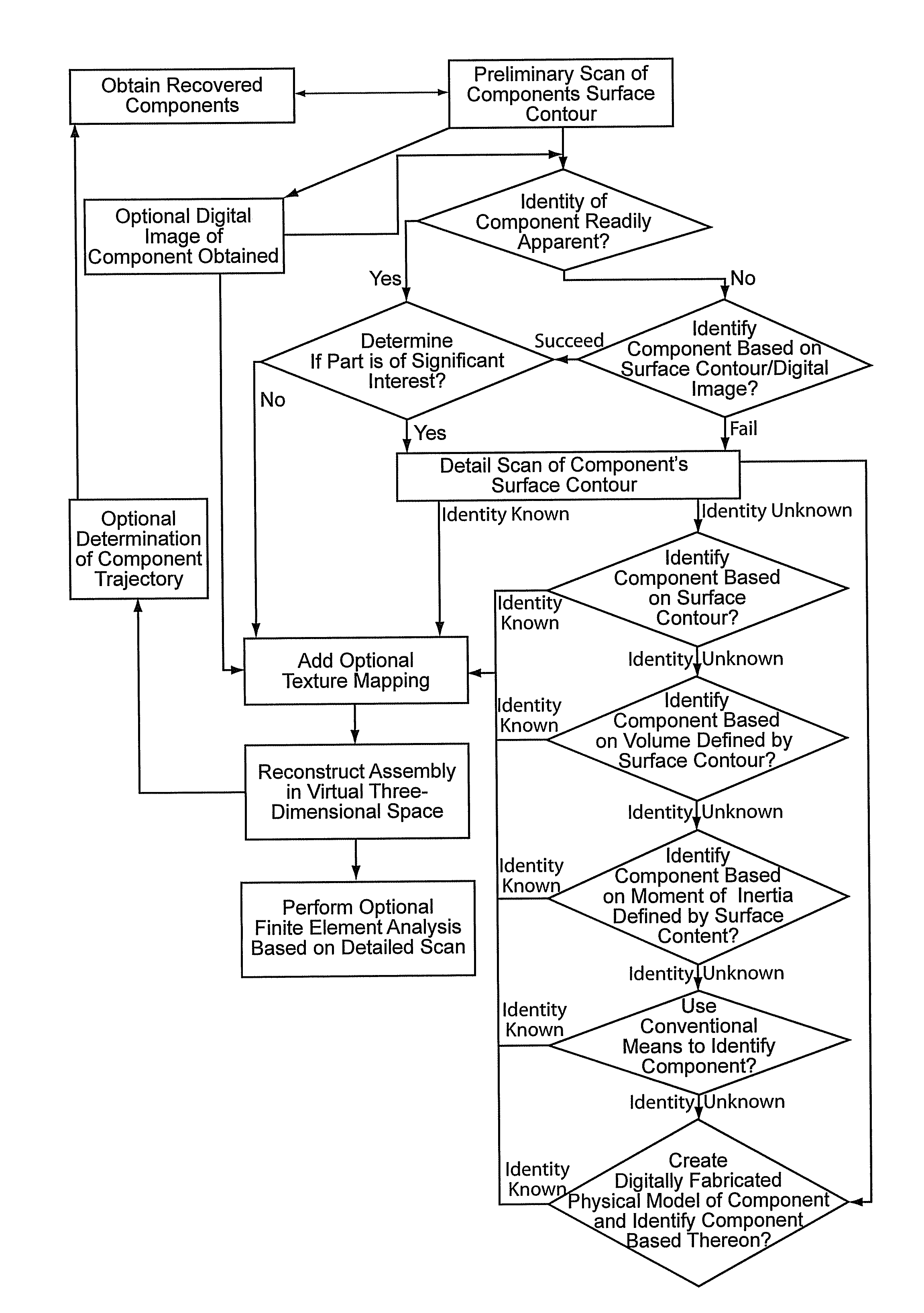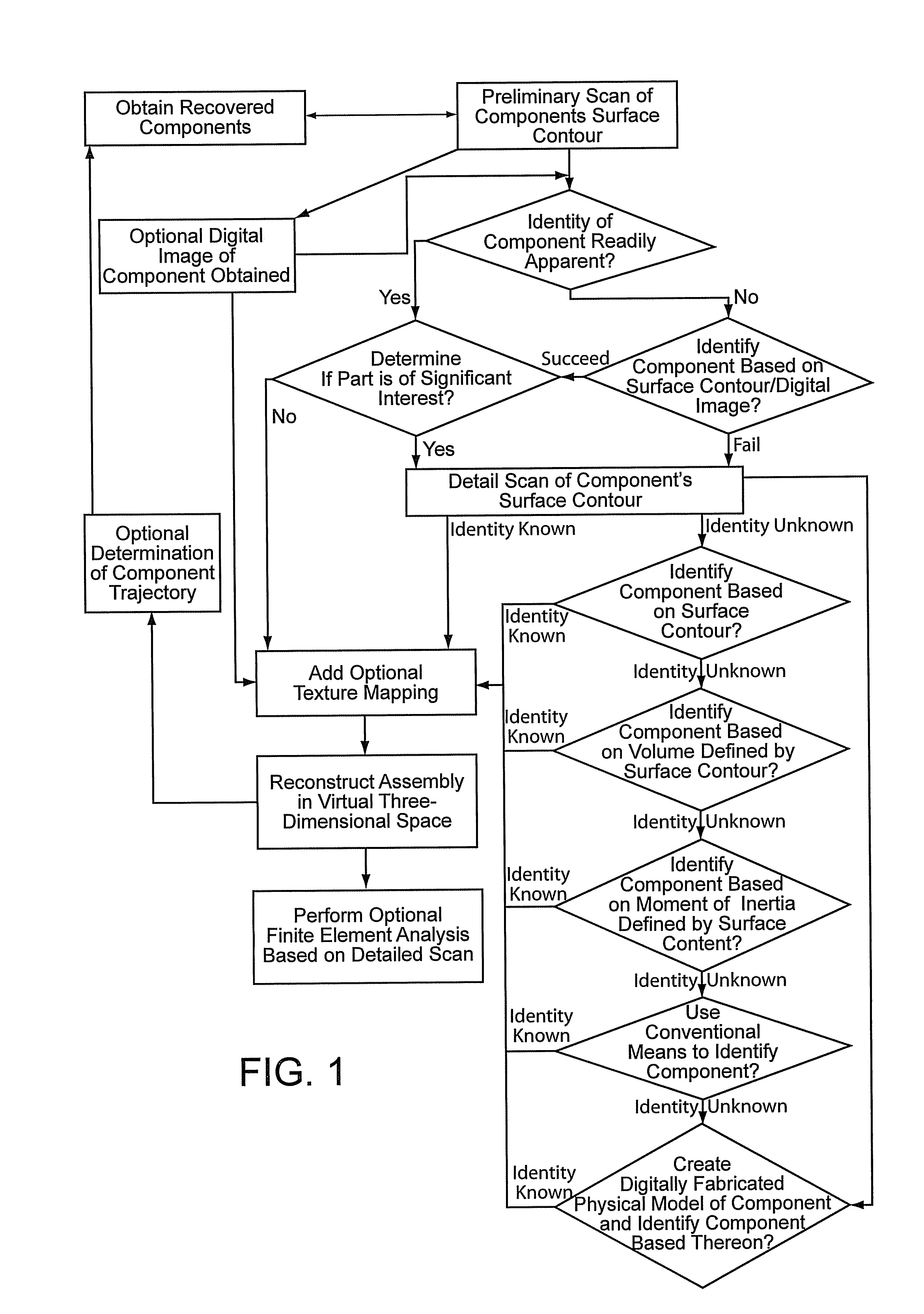Investigation of destroyed assemblies and identification of components thereof
a technology of assembly and component, applied in the field of assembly destruction investigation and component identification, can solve the problems of inability to identify components, and inability to locate components, and achieve the effect of enhancing the ability to investigate the component parts and identifying component parts quickly and relatively easily
- Summary
- Abstract
- Description
- Claims
- Application Information
AI Technical Summary
Benefits of technology
Problems solved by technology
Method used
Image
Examples
Embodiment Construction
[0013]A flow chart of the preferred method of practicing the invention is shown in FIG. 1 and is particularly adapted for the investigation of a destroyed aircraft. For purposes of describing the preferred method, it should be appreciated that such an aircraft is presumed to have been disassembled into a plurality of component parts as a result of an unknown cause of destruction. Furthermore, at least some of the components of the originally assembled aircraft are presumed to be recoverable.
[0014]In general, the preferred method begins by obtaining components of a disassembled assembly. Preferably, these components are transported to a central location from the locations where they were first located after being separated from the assembly. However, because the preferred method of practicing the invention does not necessarily require physical rigging of the components in an effort to partially reconstruct the assembly, relocation of the components is not necessarily required.
[0015]A...
PUM
 Login to View More
Login to View More Abstract
Description
Claims
Application Information
 Login to View More
Login to View More - R&D
- Intellectual Property
- Life Sciences
- Materials
- Tech Scout
- Unparalleled Data Quality
- Higher Quality Content
- 60% Fewer Hallucinations
Browse by: Latest US Patents, China's latest patents, Technical Efficacy Thesaurus, Application Domain, Technology Topic, Popular Technical Reports.
© 2025 PatSnap. All rights reserved.Legal|Privacy policy|Modern Slavery Act Transparency Statement|Sitemap|About US| Contact US: help@patsnap.com


